38 food labels serving size
Serving Size vs Portion Size Is There a Difference Measures about 1 cup An appropriate portion size for raw or cooked vegetables, whole fruit or 100% fruit juice A tennis ball or small, scooped handful Measures about ½ cup Equal to 1-ounce equivalent for grains, such as pasta, rice and oatmeal A deck of cards or the palm of the hand Measures about 3 ounce-equivalents Food Label Serving Sizes Manipulation - Truthful Nutrition Values? There are a few guidelines that have been developed through experience to help consumers in comparing serving sizes, some of them are as listed below: i. The size of 3 ounces of meat is equivalent to a deck of cards. ii. The quantity of a cup of rice is equivalent to half a baseball. iii.
Nutrition Facts table formats - Food labels - Canadian Food … Note that in these cases, the serving size declaration is modified to include a declaration for the food as prepared in addition to the food as sold. The serving size for the "Prepared" food includes the household measure only, not the metric measure. For drink crystals to be prepared with added water, for example, the serving size may be declared as "Per 1 tbsp (2 g) (about 1 …

Food labels serving size
inspection.canada.ca › food-labels › labellingNutrition Facts table formats - Food labels - Canadian Food ... The serving size for all amounts of foods appear as headings to the appropriate columns of information; The serving size for all amounts of food is expressed as a household measure (first) and in a metric measure (second, in brackets) The primary serving corresponds to the first serving of food and is reflective of the reference amount My Food Label: Determining the Serving Size - ReciPal Thus, our serving size should be listed as "1 cookie (40 grams)" or "1 piece (40 grams)". If our average cookie is 60 grams, we show it as "1/2 cookie (30 grams)". And if an average cookie is 10 grams, we list it as "3 cookies (30 grams)". Gaming the Rules A lot of companies game the system and actually use the FDA guidelines to their advantage. Food Labels | CDC - Centers for Disease Control and Prevention 20.09.2022 · Check the Serving size first. All the numbers on this label are for a 2/3-cup serving. This package has 8 servings. If you eat the whole thing, you are eating 8 times the amount of calories, carbs, fat, etc., shown on the label. Total Carbohydrate shows you types of carbs in the food, including sugar and fiber.
Food labels serving size. Serving size on food label - HealthyLife | WeRIndia According to FDA, new Nutrition facts food label depicts the serving sizes based on the amount of food people typically consume, rather than how much a person should consume. What we should know is, serving sizes are not the reflection of what we consume. Our food habits and portion that we consume have changed a lot in past two decades. Serving Size for Food Products - LabelCalc How to Determine Serving Size for Food Products. ... The reference amount refers to the weight of your single serving size. The label statement refers to what needs to be stated on the nutrition label. In the case of our biscuit example, a single serving of biscuit should weigh approximately 55g, however, on the nutrition label itself you may ... Guidance for Industry: Food Labeling: Serving Sizes of Foods That Can ... In the Federal Register of May 27, 2016 (81 FR 34000), we published a final rule pertaining to serving sizes for food.The final rule amends the definition of a single-serving container, requires ... Serving Size - LabelCalc In May of 2016 the U.S. Food and Drug Administration (FDA) published a final rule regarding the serving sizes of food. The final rule required new nutrition labeling as well as changing the definition of single-serving containers. ... LabelCalc's nutrition labels adhere to the new serving size, single-serving, and dual-column labeling ...
How to Determine Serving Size - LabelCalc 2. Use your RACC to determine serving size: Portion out your product according to the RACC (i.e. weigh out 115 grams of your cereal). Then, measure it in cups, pieces, or as a fraction of the package in order to find the serving size in familiar units. Cups: Take the 115 grams of cereal and measure it in a measuring cup. This value will appear ... Larger Serving Sizes On Food Labels May Encourage Us to Eat Less - HuffPost Let's hope that this occurs in reality if FDA does, in fact, increase the serving sizes on food labels (which the agency proposed doing for nearly 17% of packaged foods). For example, FDA is proposing to increase the serving size of ice cream from ½ cup to 1 cup. Rather than view the 1 cup serving as a recommendation, I hope that instead ... The Basics of the Nutrition Facts Label - Academy of Nutrition and ... 04.03.2022 · The Nutrition Facts applies to the serving size, so if the serving size is one cup and you eat two cups, you are getting twice the calories, fat and other nutrients than what is listed on the label. Step 2: Compare the Total Calories to Your Individual Needs. Find out how many calories are in a single serving and compare it to your total ... › managing › eat-wellFood Labels | CDC - Centers for Disease Control and Prevention Sep 20, 2022 · Check the Serving size first. All the numbers on this label are for a 2/3-cup serving. This package has 8 servings. If you eat the whole thing, you are eating 8 times the amount of calories, carbs, fat, etc., shown on the label. Total Carbohydrate shows you types of carbs in the food, including sugar and fiber.
How to Easily Calculate the Serving Size in Recipes | livestrong 21.04.2022 · For example, if your lobster mac and cheese weighs 92.86 ounces and yields eight servings, the first number divided by the second would be 11.607, which you would then round to 11.5 ounces per serving. (Divide up the food into individual servings if you don't want to use the food scale every time you'd like a helping.) Understanding Food Labels | The Nutrition Source | Harvard T.H. Serving Size and Calories are bolded and in larger font. Calories is an important number to many consumers. The label lists the calorie amount for one serving of food. The serving size, also important but often unnoticed, is easily doubled or tripled when not paying attention to the serving size, quickly inflating the calories. Highlighting both of these values emphasizes their … Understanding Serving Size Values on Food Labels - Nina Cherie Franklin The "serving size" of a packaged product is always shown at the very top of the Nutrition Facts label. This is essentially the amount of food recommended to account for one serving. Serving sizes are typically listed in pieces, grams, ounces, tablespoons, cups or other common units of measurement. For instance, a serving of baby carrots ... › en › healthy-livingUnderstanding Ingredients on Food Labels | American Heart ... Mar 06, 2017 · Food labels are an important source of information about calories and the nutritional value of the foods you eat, a crucial tool in building a heart-healthy diet. The Nutrition Facts information is always displayed in the same orderly fashion and helps you understand how much of certain nutrients that you need to limit are contained in the ...
Nutrition Labels Might Change Again Soon - thetakeout.com A brief history of the nutrition label. Nutrition facts labeling is actually a relatively new concept in itself—it wasn't until 1990 that the Nutrition Labeling and Education Act (NLEA) was signed into law, and according to Food Insight, the first nutrition label in response to that law didn't debut until 1994.Before then, packaged food only required a nutrition label if it was making a ...
› food › new-nutrition-facts-labelHow to Understand and Use the Nutrition Facts Label | FDA Feb 25, 2022 · The information in the main or top section (see #1-4) of the sample nutrition label (below) can vary with each food and beverage product; it contains product-specific information (serving size ...
PDF Activity: Food Labels and Serving Sizes - UNC Gillings School of Global ... 3. Read aloud the directions at the top of the Food Labels and Serving Sizes handout and instruct participants to fill out the front page of the handout based on the amount of food they would each normally eat versus the recommended serving size. 4. Using the copies of Nutrition Facts labels of various foods, have participants fill in the
Food Serving Sizes Have a Reality Check | FDA In some cases, the reference amounts used to set serving sizes are smaller. Today's individually packaged yogurts more often come in 6-ounce containers, versus the previous 8-ounce ones. The FDA is...
Serving Sizes and Other Food Label Secrets - DSM The serving size is usually the first thing listed. It should tell you two things: what the size is of one serving, and how many servings are in the container. This is really useful when it comes to figuring out how much to eat. Hieronymus and Carlisle give these sample food labels for packaged pizzas.
A Visual Guide to Protein Serving Sizes | Kitchn 31.05.2020 · A serving size is most importantly a measurement that allows food manufacturers to create uniform nutrition labels for consumers, so you, the consumer, can have a clear image of what that food contains. It’s then up to you to determine how much of the item you need for your own wellness and nutrition needs.
Serving sizes and reference amounts - Information within the Nutrition ... The amount must be indicated under the Nutrition Facts heading using the phrase "Per (naming the serving size)", "Serving Size (naming the serving size)", or "Serving (naming the serving size)". The serving size is a quantity of food that can be reasonably consumed at a single eating occasion [item 1 of the Table to B.01.401, FDR ].
Serving Size on the New Nutrition Facts Label | FDA - U.S. Food and ... First, look at the serving size and the number of servings per container, which are at the top of the label. The serving size is shown as a common household measure that is appropriate to the food...
Serving size - Canada.ca Serving size is listed in a common household measure. It also is listed in grams or millilitres depending on the type of food. Common household measures include: a fraction of a food such as 1/4 pizza (90 g) number of pieces such as 4 crackers (20 g) cups, teaspoons or tablespoons (3/4 cup of yogurt [175 g] or 1 tablespoon of peanut butter [15 g] )
Serving Size Updates on the New Nutrition Facts Label | FDA On the original Nutrition Facts label, the serving size was 1/2 cup (66g), while on the new Nutrition Facts label, the serving size is 2/3 cup (88g). While it may look like the calories and...
Understanding Ingredients on Food Labels | American Heart … 06.03.2017 · Food labels are an important source of information about calories and the nutritional value of the foods you eat, a crucial tool in building a heart-healthy diet. The Nutrition Facts information is always displayed in the same orderly fashion and helps you understand how much of certain nutrients that you need to limit are contained in the product per serving.
Understanding the FDA Food Label: The Serving Size The serving size is located at the top of the FDA food label. It not only tells you the amount of a single serving, but it will tell you how many servings are in the container. For example, the label on a can of pears may note that the serving size is ½ cup and that the can contains three servings. Serving Size vs. Portion Size
› food › nutritionThe Basics of the Nutrition Facts Label Mar 04, 2022 · Calorie free: Less than five calories per serving. Fat free/sugar free: Less than ½ gram of fat or sugar per serving. Low sodium: 140 milligrams or less of sodium per serving. High in: Provides 20% or more of the Daily Value of a specified nutrient per serving. Step 5: Choose Low in Saturated Fat, Added Sugars and Sodium
6 Free Printable Food Labels Worksheet & Different Types Serving Size Label Is the serving size, which indicates how much food equals one serving size - for example, it might be 1 cup or 1/2 cup or 1 ounce for a beverage- and it also lists how many servings are in a package. Nutrition Facts Label
No, serving sizes on food labels don't tell us how much we should eat The serving size on the label is not a recommendation on how much you should eat - it is decided by the manufacturer. It's based on how much they expect a person to typically eat, or the unit ...
Nutrition Labels: Who Determines What a Serving Size Is? - MEL Magazine Ice cream nutrition labels have been modified accordingly, with a pint of Ben & Jerry's now defined as three servings instead of four. Soda, meanwhile, has increasingly been sold in larger containers — from a 12-ounce can to 20-ounce bottles. Nutrition labels now better reflect those increases, too.
› nutritionsource › food-labelUnderstanding Food Labels | The Nutrition Source | Harvard T ... One might assume the small bag to contain 1 serving, but it actually contains 3 servings so that eating the whole bag provides 300 calories. With the updated label, the same size bag would show 1 serving at 300 calories. Keep in mind that the serving size is not a recommendation for everyone about how much to eat, but rather a reference point.
Guidance for Industry: Serving Sizes of Foods and Other Topics Guidance for Industry: Serving Sizes of Foods That Can Reasonably Be Consumed At One Eating Occasion, Reference Amounts Customarily Consumed, Serving Size-Related Issues, Dual-Column Labeling, and ...
How to Read Serving Sizes on Nutrition Labels - Lark A serving size is a measured amount of food (such as a tablespoon or a fraction like 1/8th) that is the "Nutrition Facts" found on the back of food. A single portion can contain multiple servings. This is where reading the nutritional label on the back of food becomes important. The "serving size" is listed first, with the unit of ...
General Food Labeling Requirements - California The size of the lettering, unless stated, must ... less than 5 milligrams of sodium per serving of the food. Among the 11 terms, “lean” used to be applicable only to specific foods, such as seafood, game meat products, and meal-type products. In January 2007, FDA ex panded its definition to make it applicable to foods categorized as “mixed dishes not measurable with a …
› Programs › CEHGeneral Food Labeling Requirements - California Exceptions may be applied to small, single-serving packages as specified in 21 CFR §101.2. All required information must be in English. Accurately translated information in another language may accompany it. Labels must be made of materials that do not contaminate the food. If there is likelihood that the
How To Read Food and Beverage Labels - National Institute on Aging At the top of the Nutrition Facts label, you will find the total number of servings in the container and the food or beverage's serving size. The serving size on the label is based on the amount of food that people may typically eat at one time and is not a recommendation of how much to eat. Read more about serving and portion sizes.
How to Understand and Use the Nutrition Facts Label | FDA - U.S. Food … 25.02.2022 · Pay attention to the serving size, especially how many servings there are in the food package. For example, you might ask yourself if you are consuming ½ serving, 1 serving, or more .
Serving Sizes In The Food Guide Pyramid And On Food Labels The FDA changed all that by breaking down the foods into almost 200 categories and providing standardized serving sizes in each similar food category. All frozen desserts now have astandardized serving size of 1/2 cup so there isn't any need to bring the calculator with you when heading to the supermarket.
Food Labels and Serving Size - DTN Progressive Farmer The concept of "one serving size fits all" seems unrealistic. Perhaps benchmarks of 100, 200, 300 calories and so forth should be presented. This is not the first flap over labeling that has...
Food Labels | CDC - Centers for Disease Control and Prevention 20.09.2022 · Check the Serving size first. All the numbers on this label are for a 2/3-cup serving. This package has 8 servings. If you eat the whole thing, you are eating 8 times the amount of calories, carbs, fat, etc., shown on the label. Total Carbohydrate shows you types of carbs in the food, including sugar and fiber.
My Food Label: Determining the Serving Size - ReciPal Thus, our serving size should be listed as "1 cookie (40 grams)" or "1 piece (40 grams)". If our average cookie is 60 grams, we show it as "1/2 cookie (30 grams)". And if an average cookie is 10 grams, we list it as "3 cookies (30 grams)". Gaming the Rules A lot of companies game the system and actually use the FDA guidelines to their advantage.
inspection.canada.ca › food-labels › labellingNutrition Facts table formats - Food labels - Canadian Food ... The serving size for all amounts of foods appear as headings to the appropriate columns of information; The serving size for all amounts of food is expressed as a household measure (first) and in a metric measure (second, in brackets) The primary serving corresponds to the first serving of food and is reflective of the reference amount
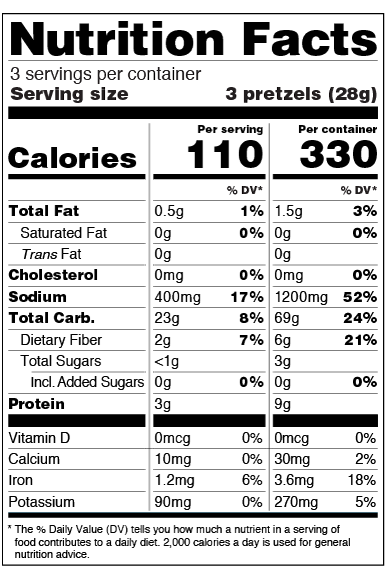
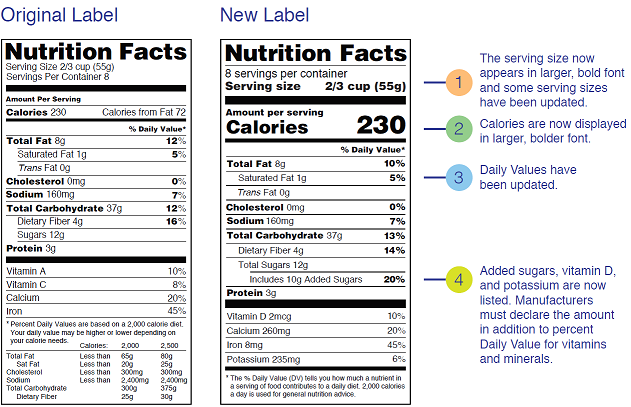
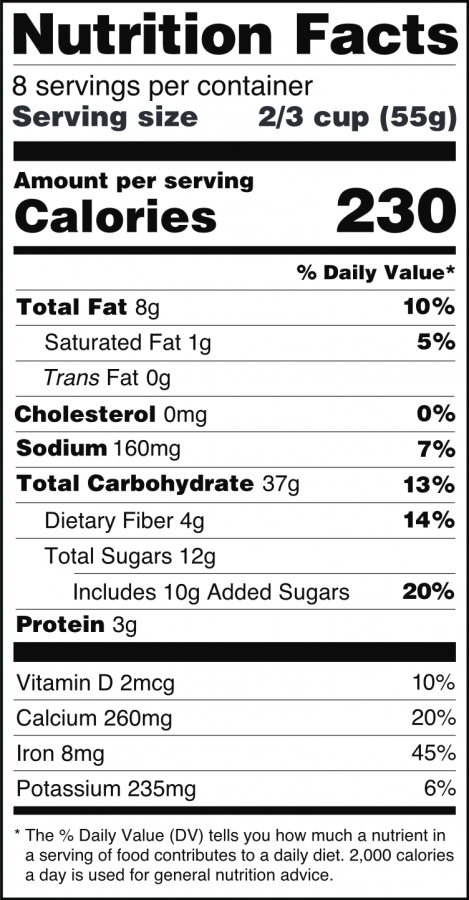

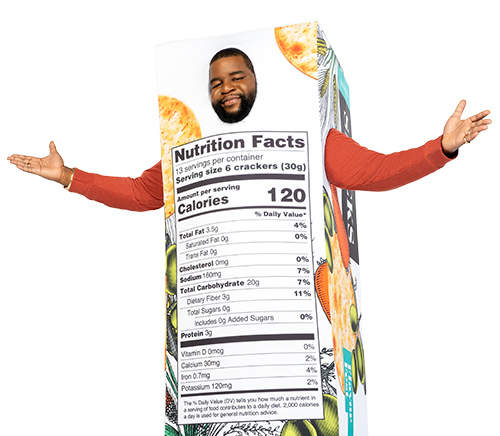








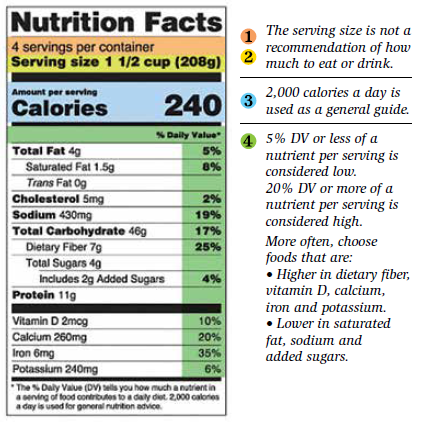

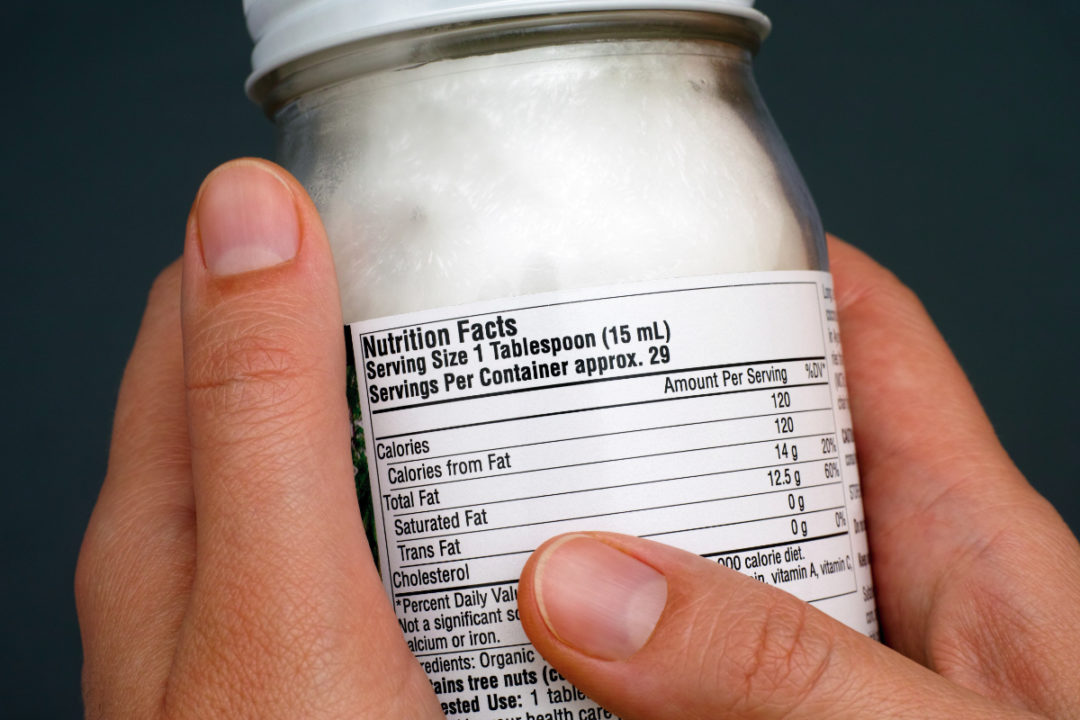



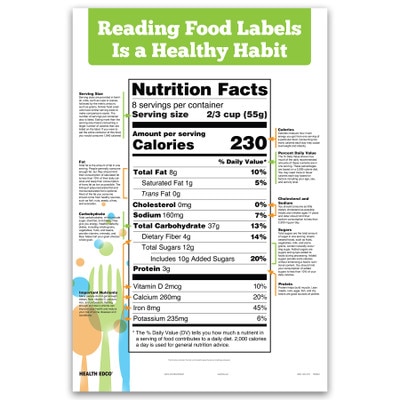
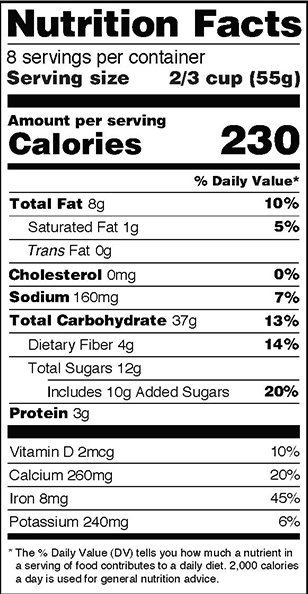
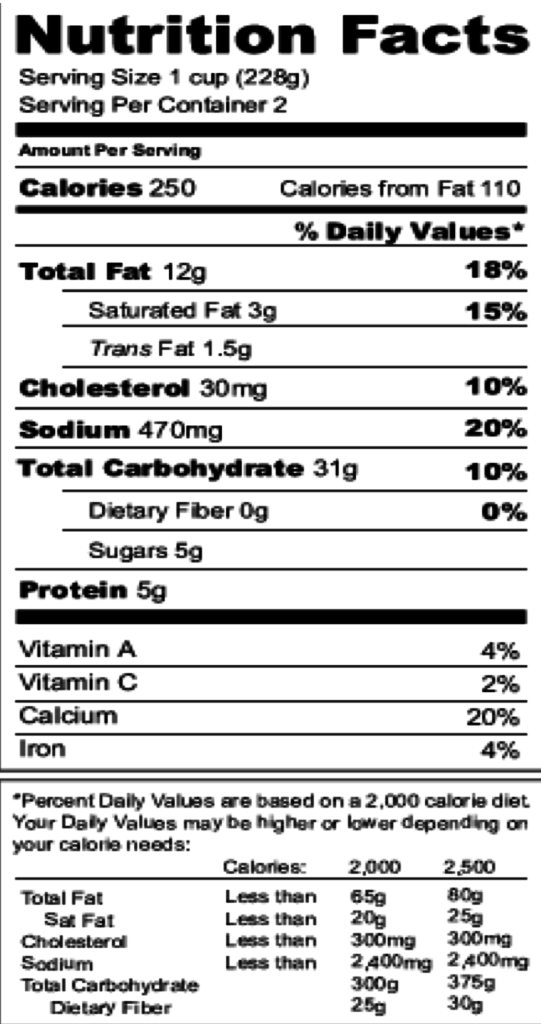

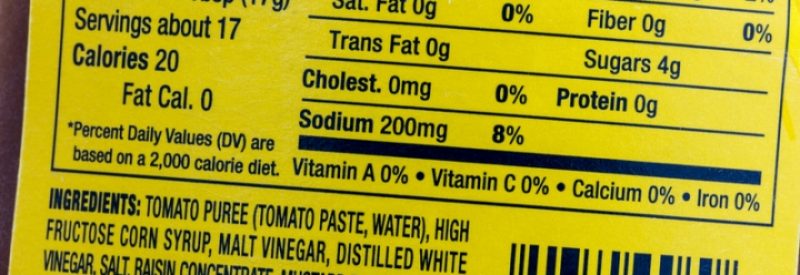


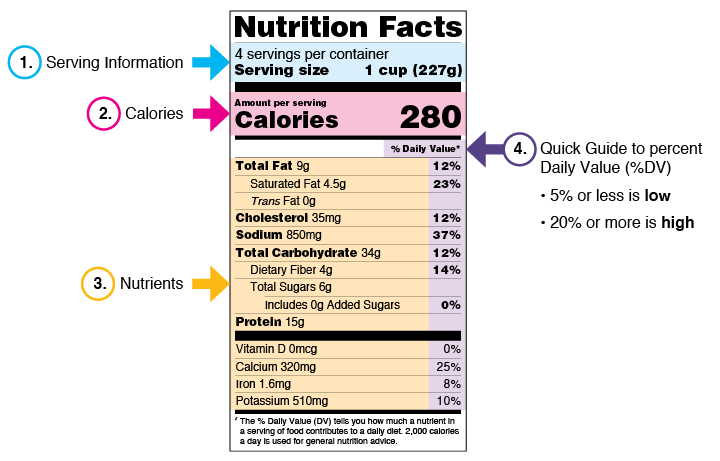


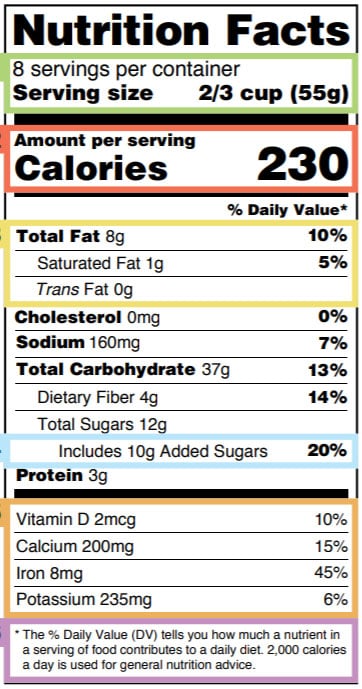




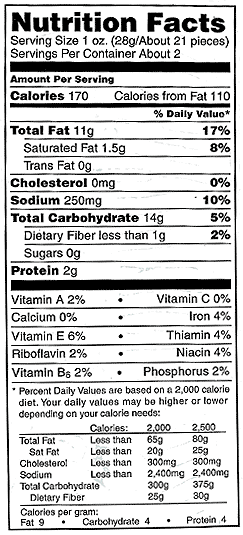
Post a Comment for "38 food labels serving size"